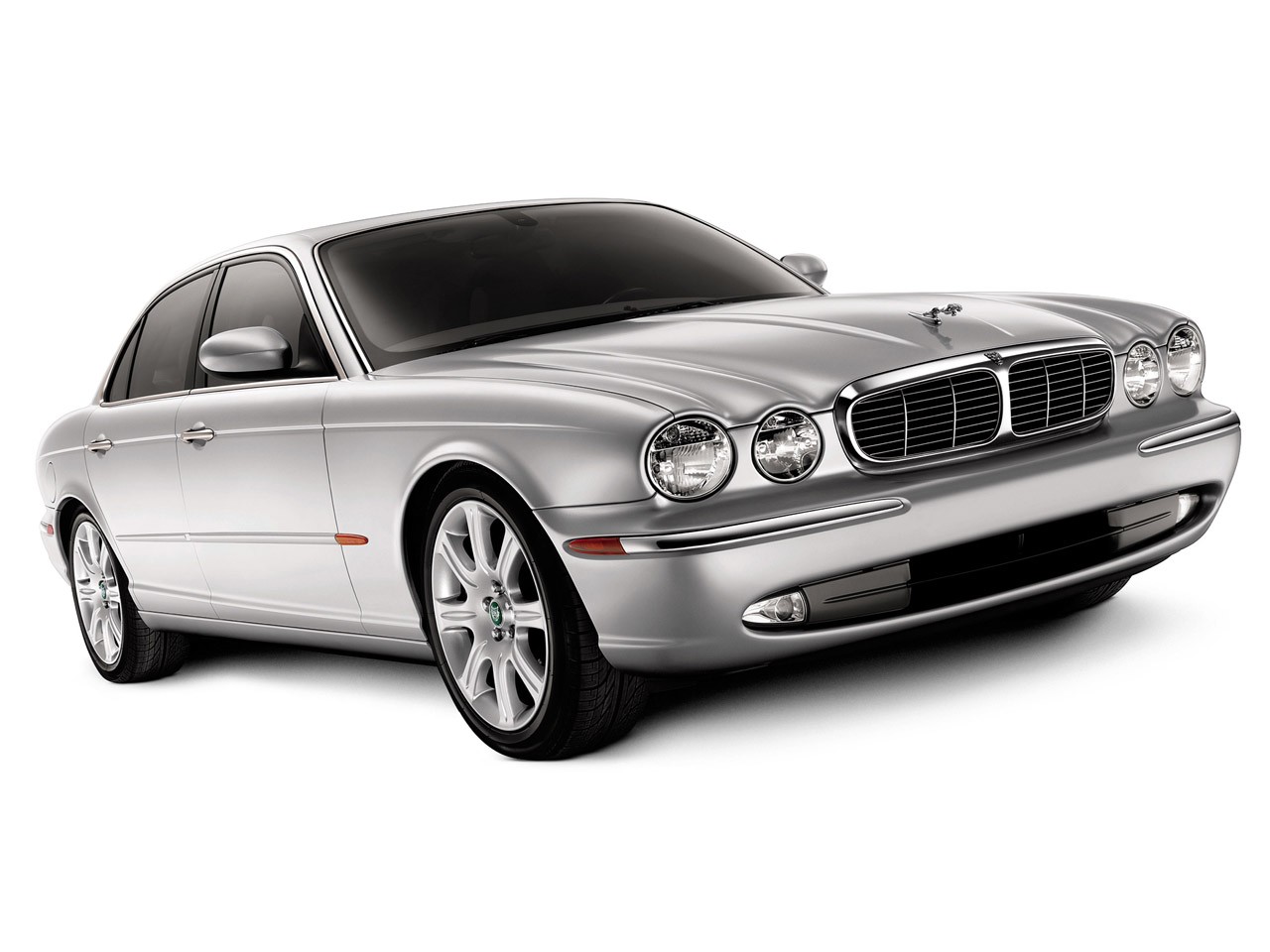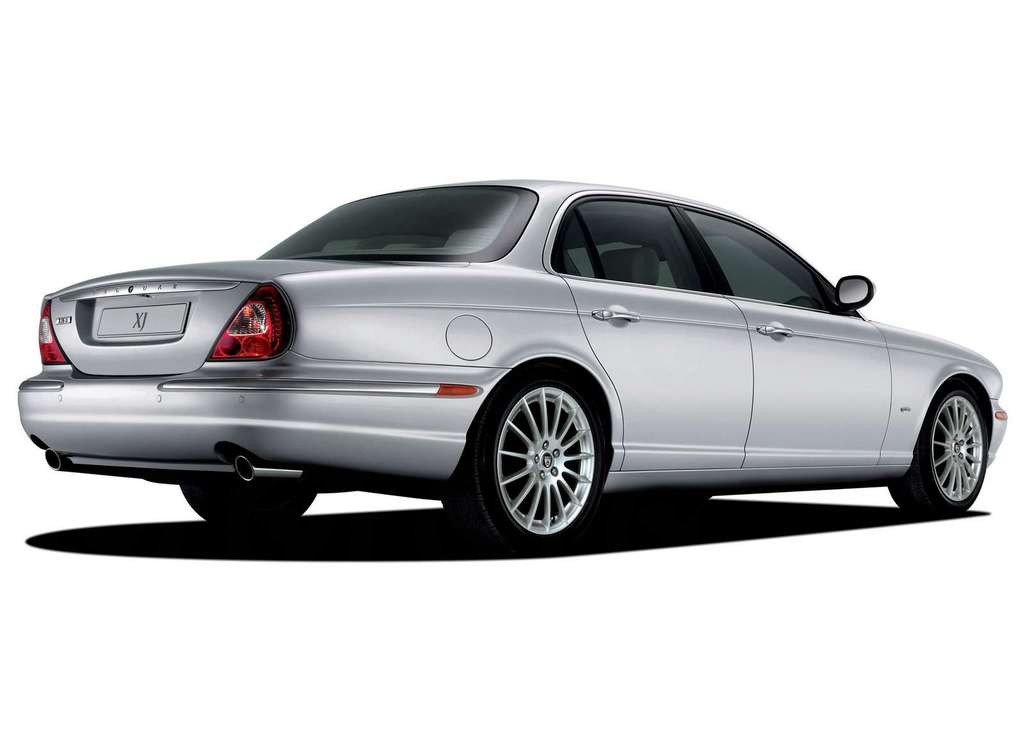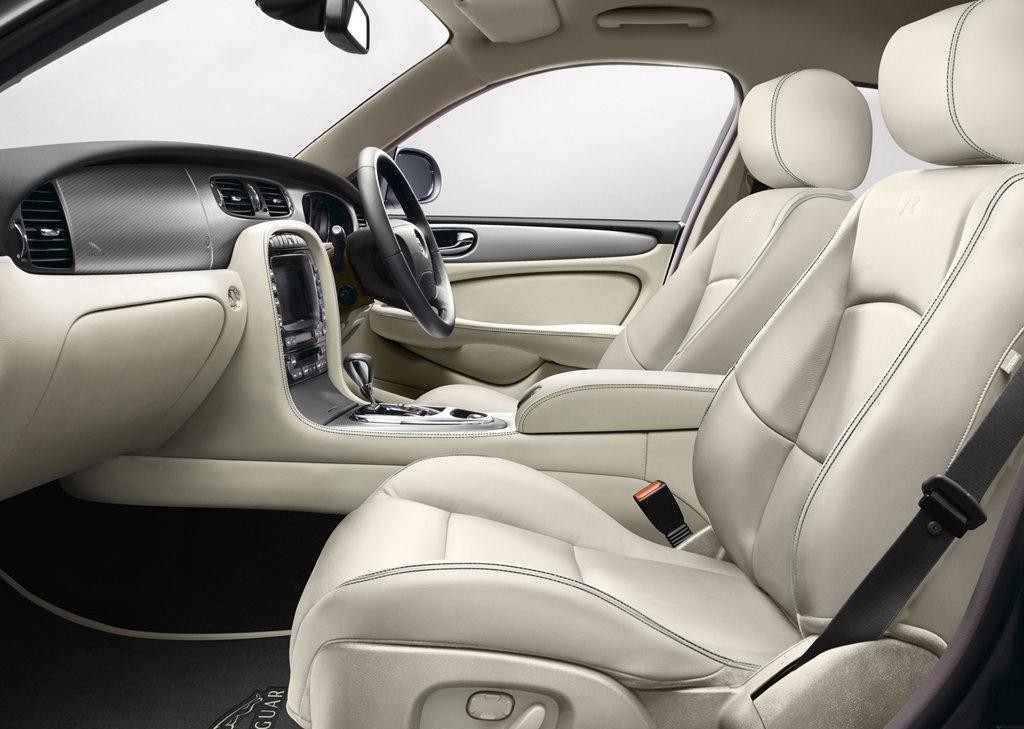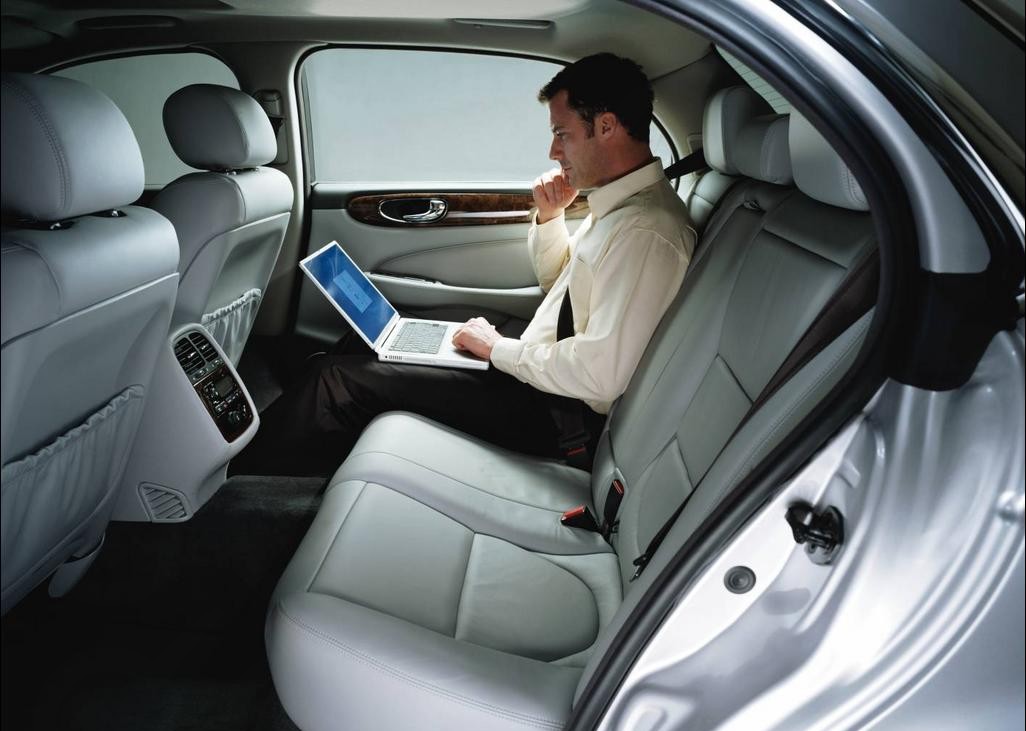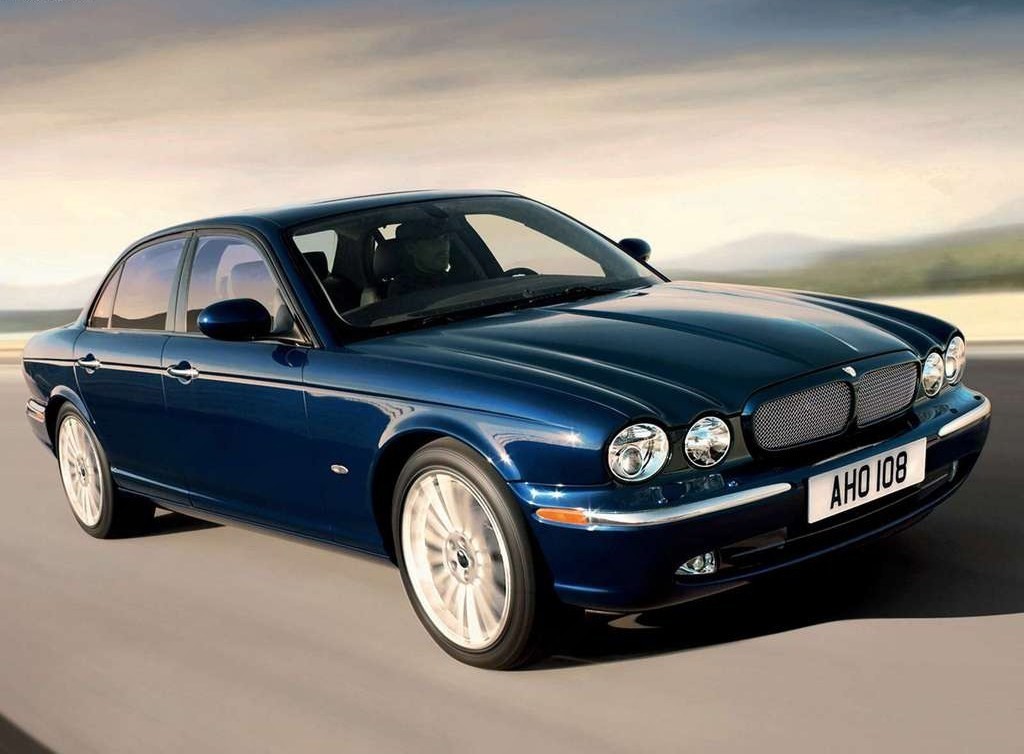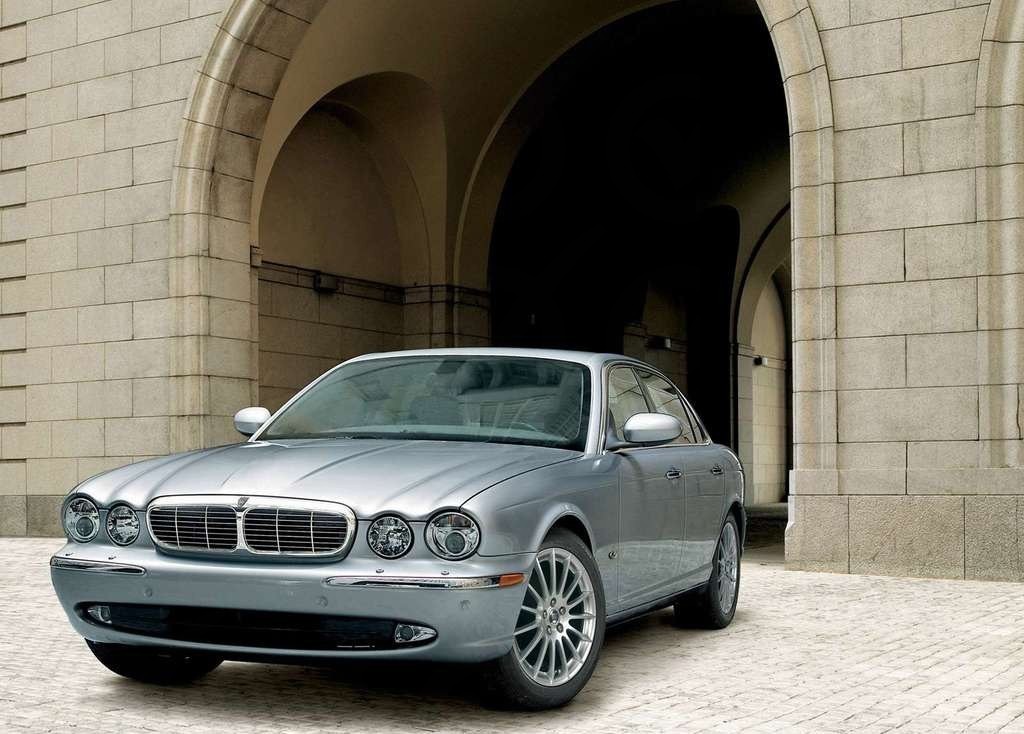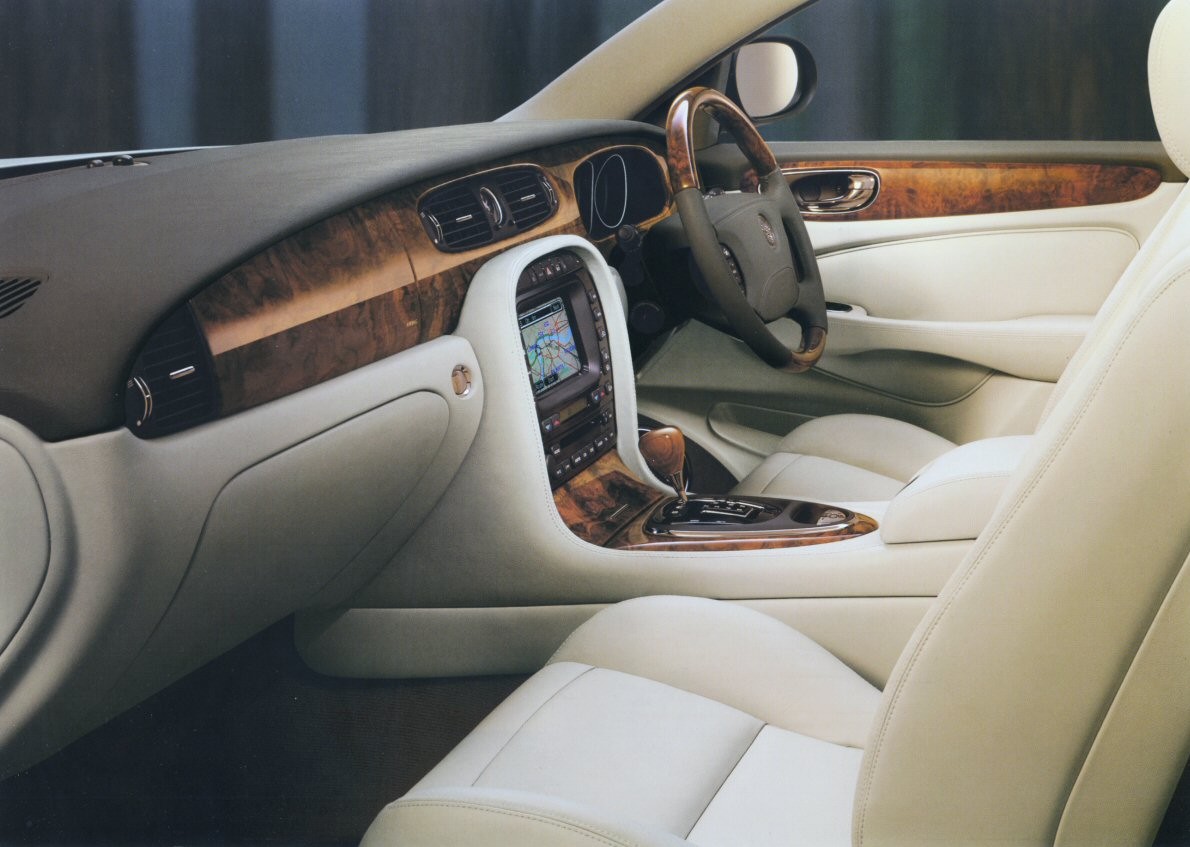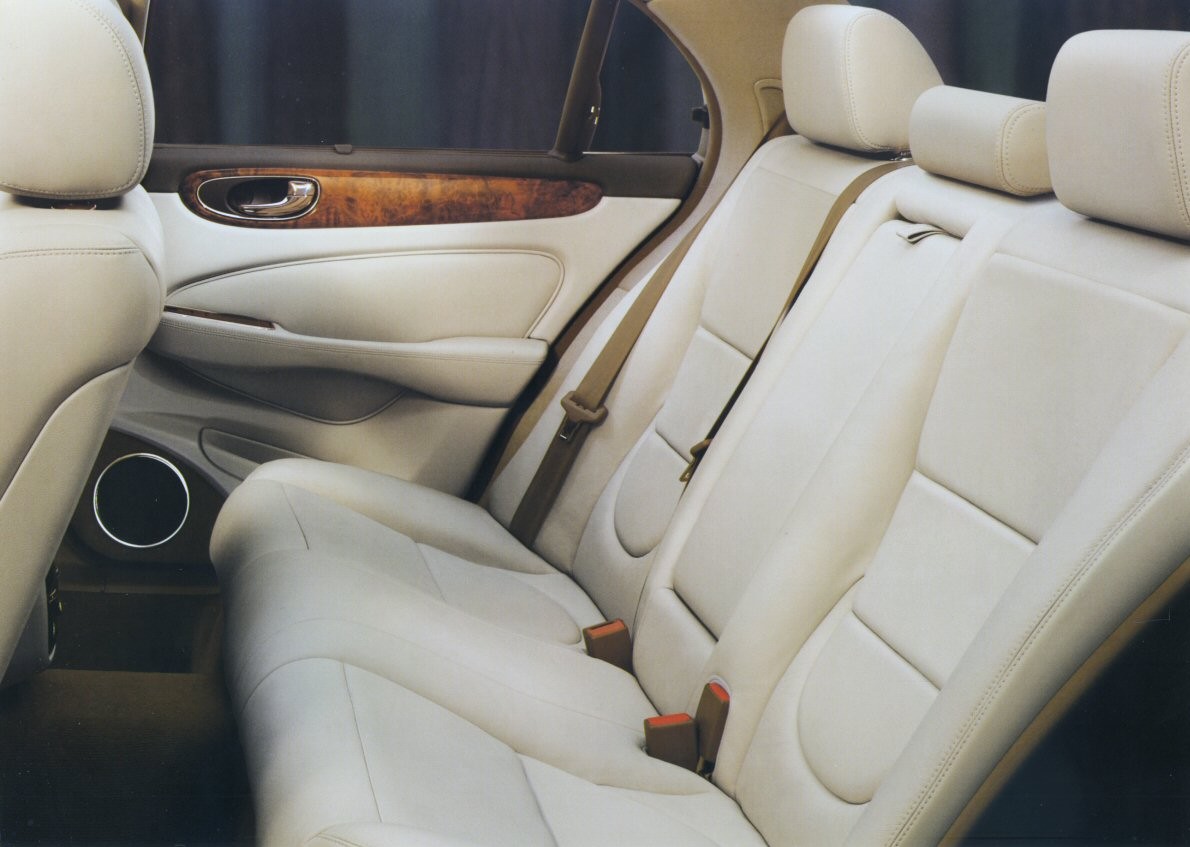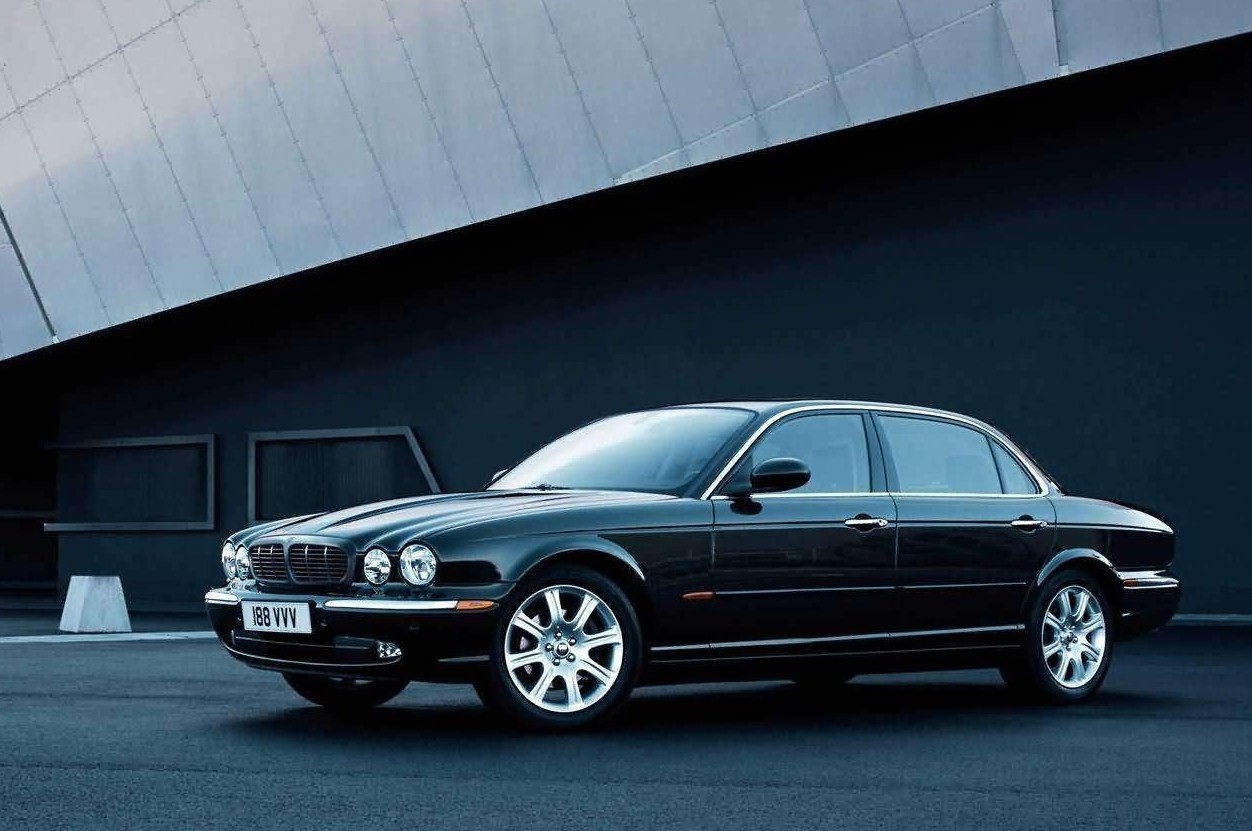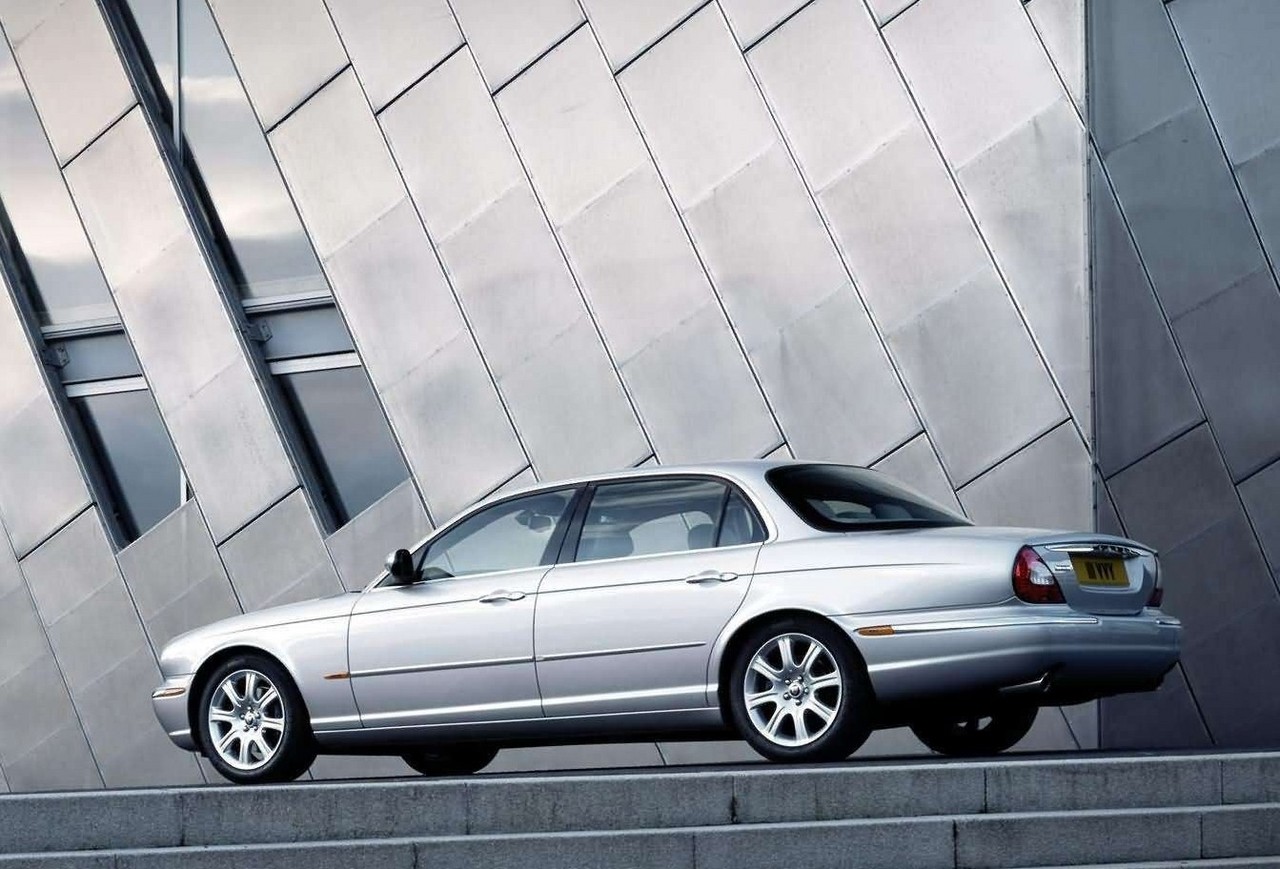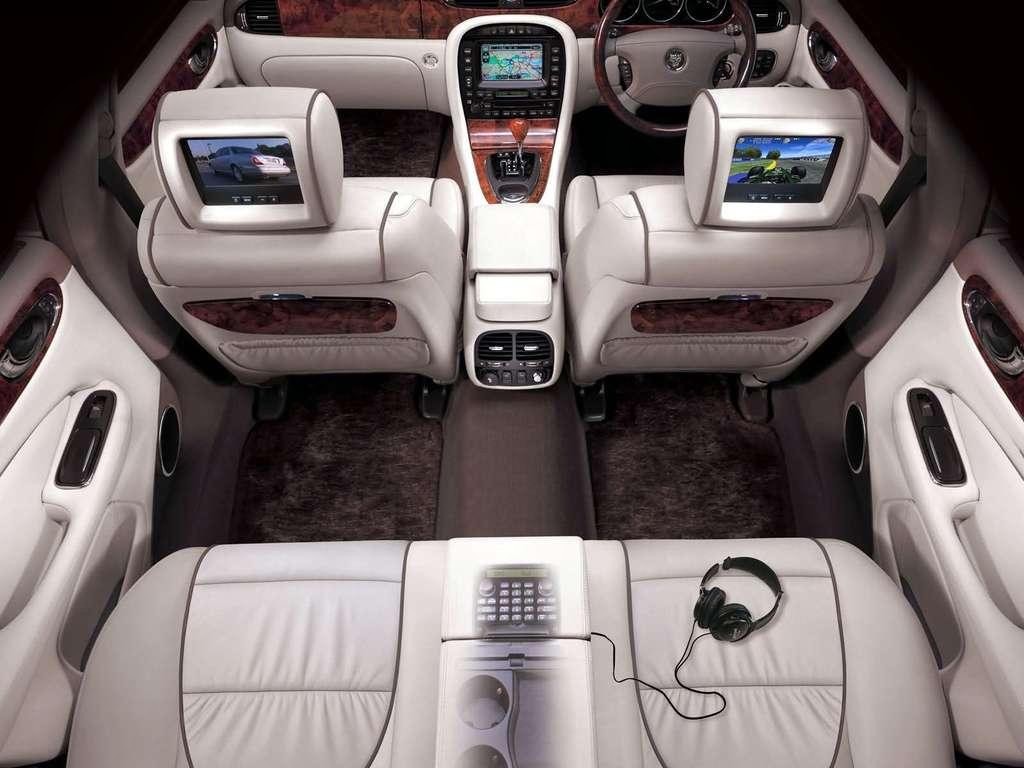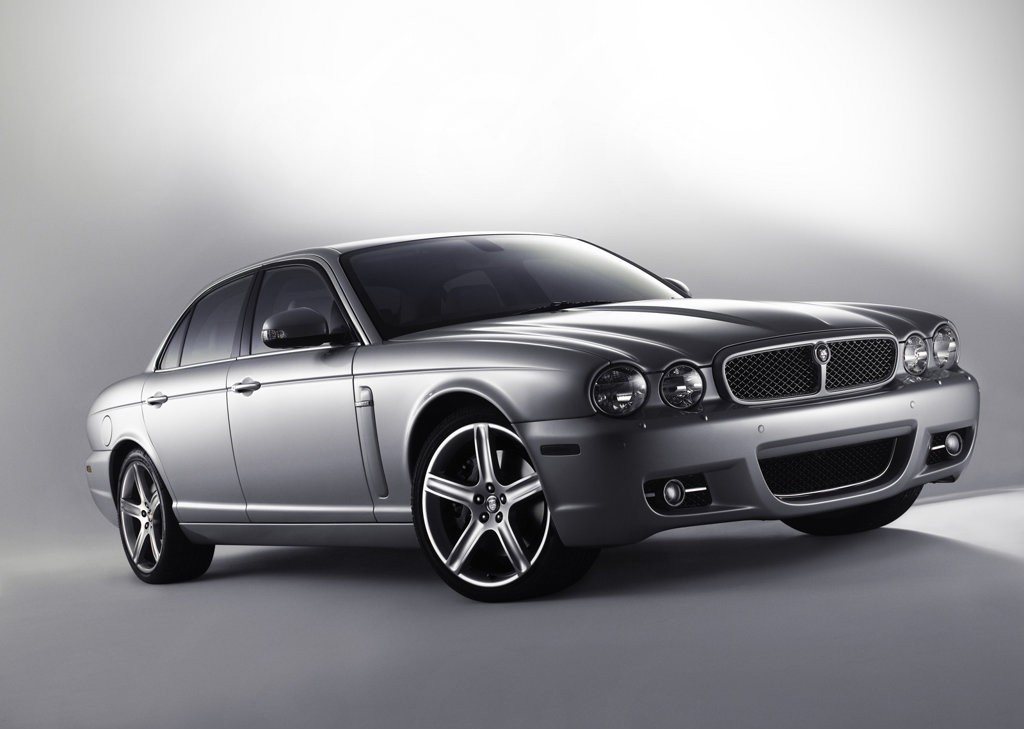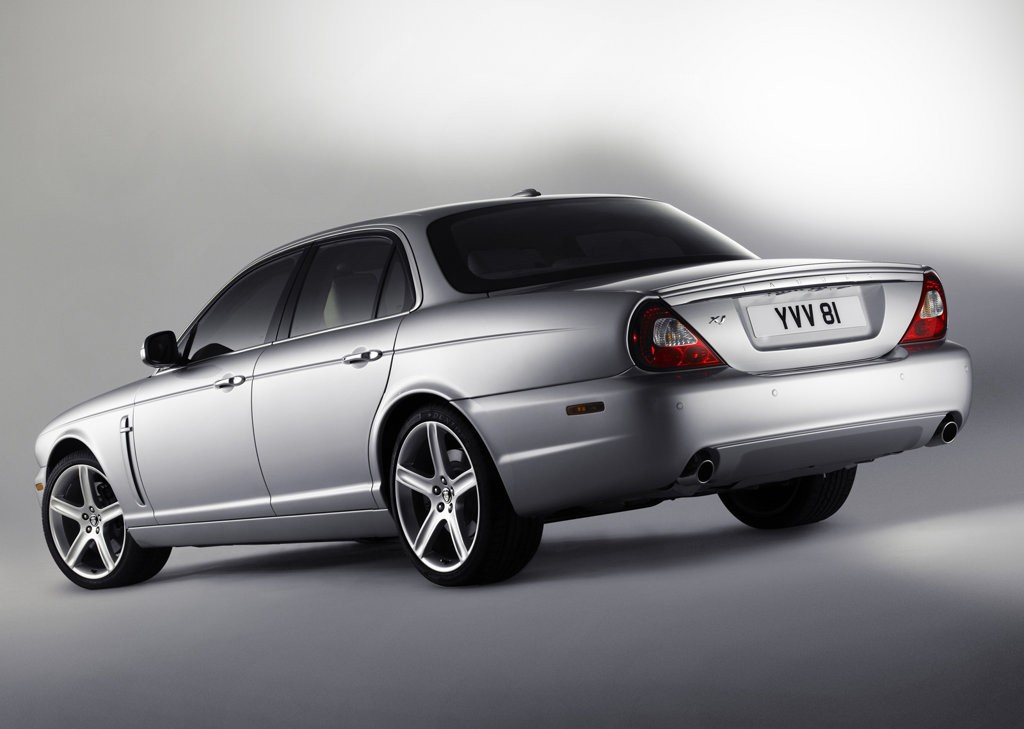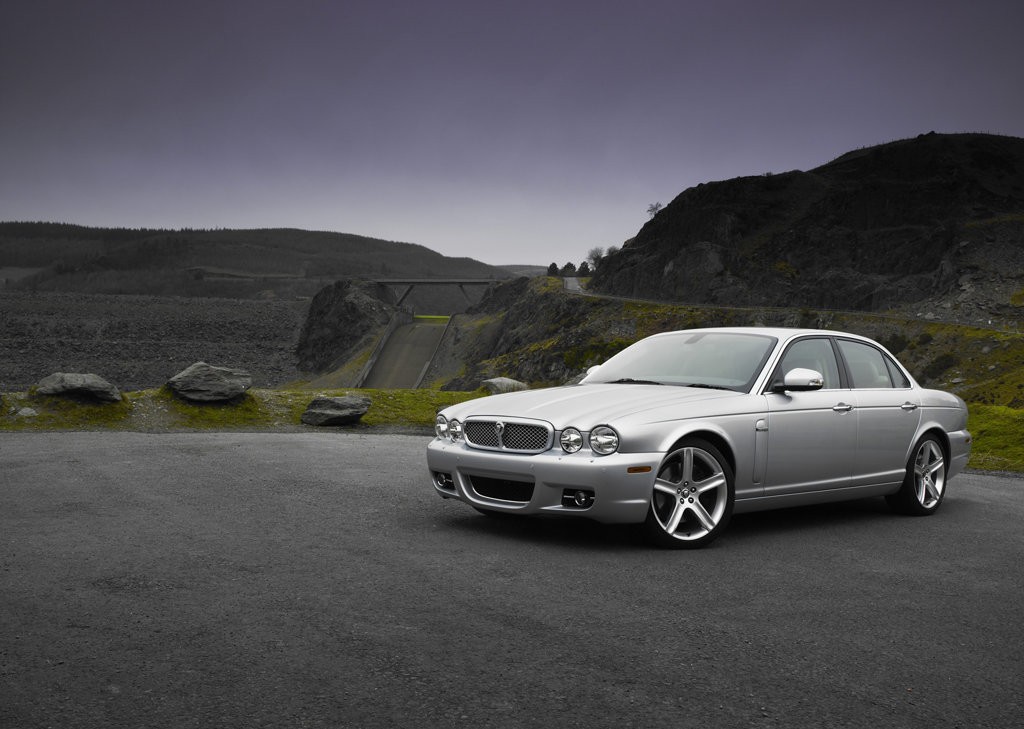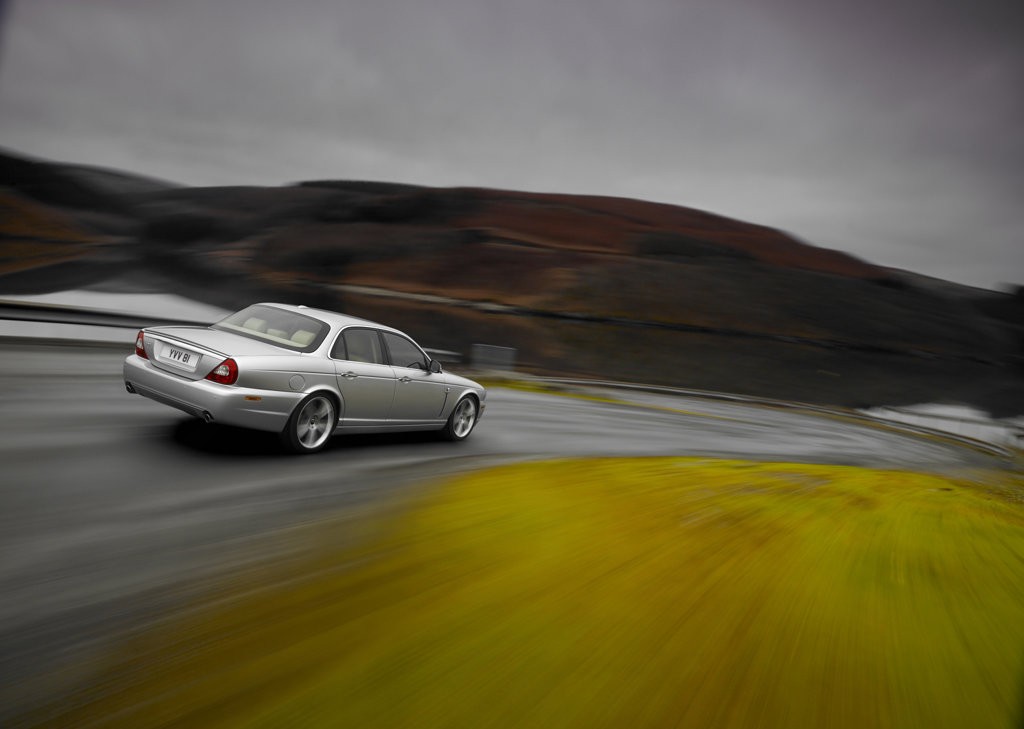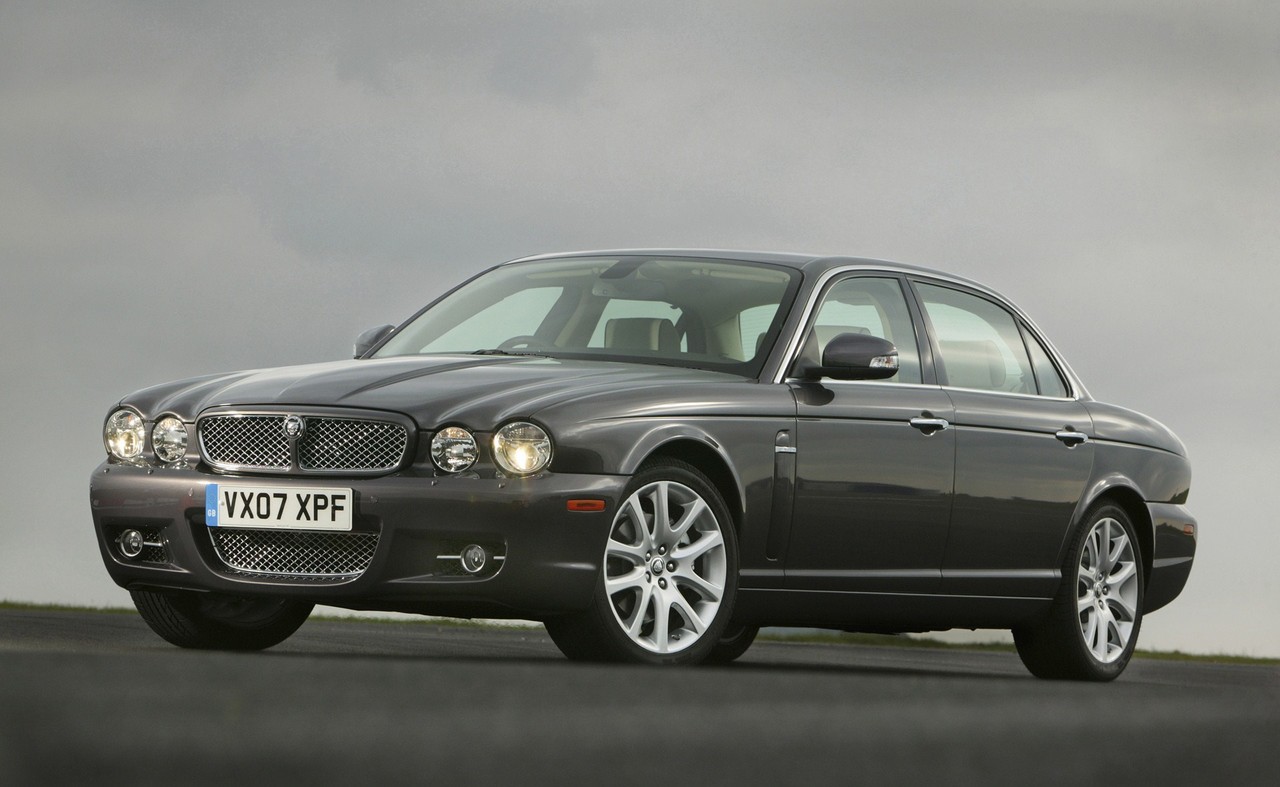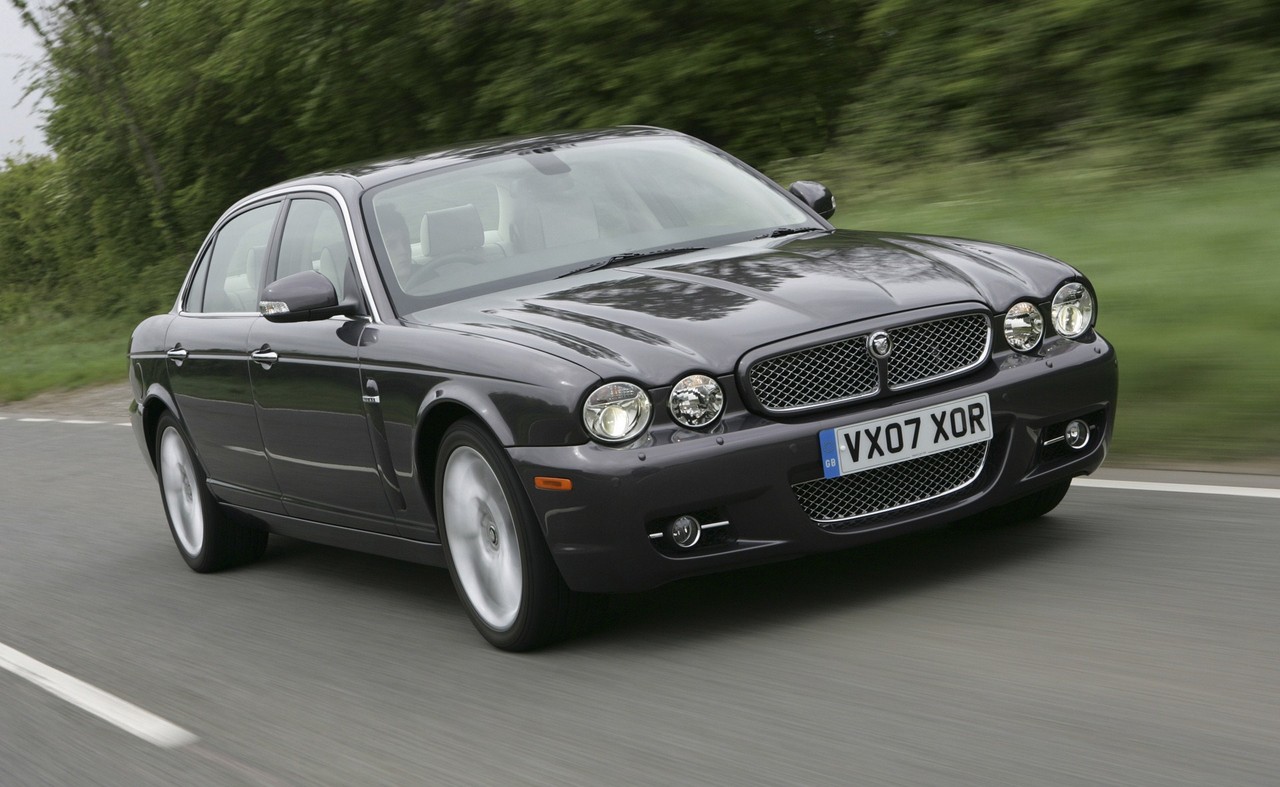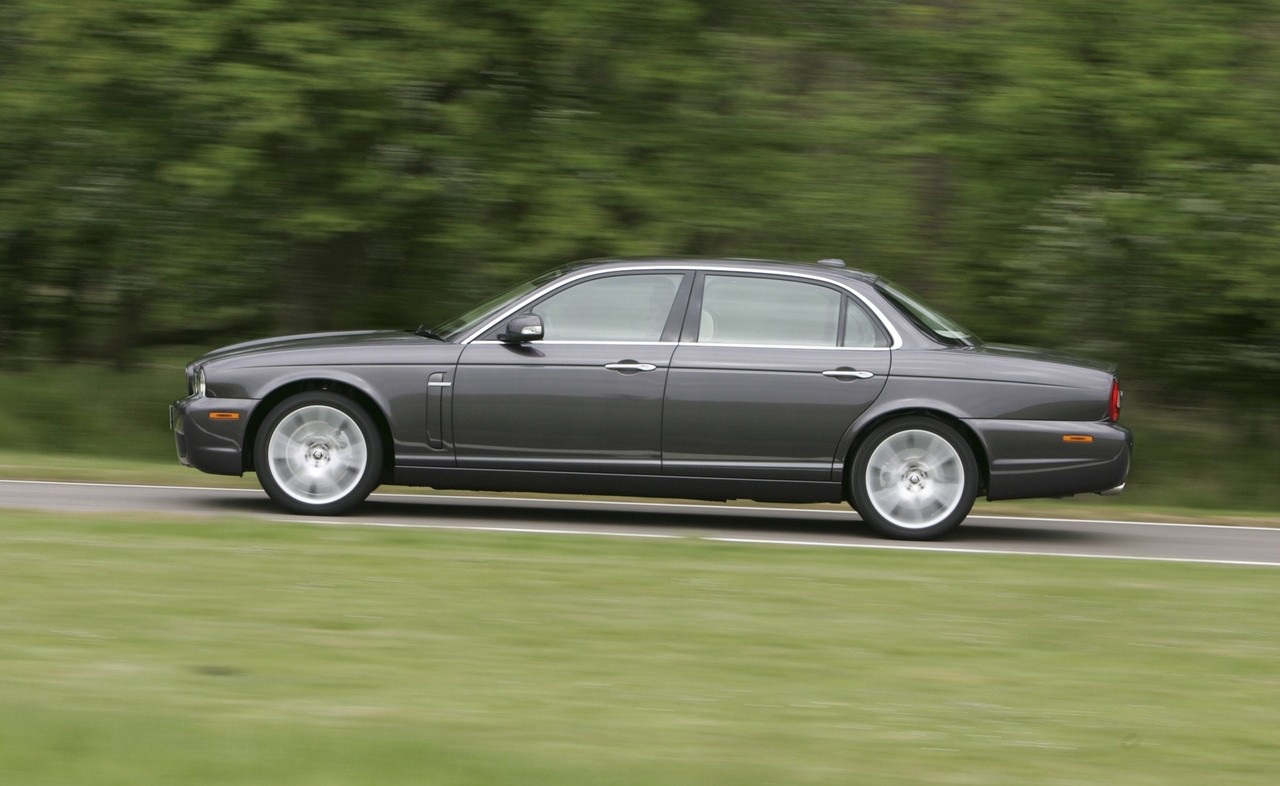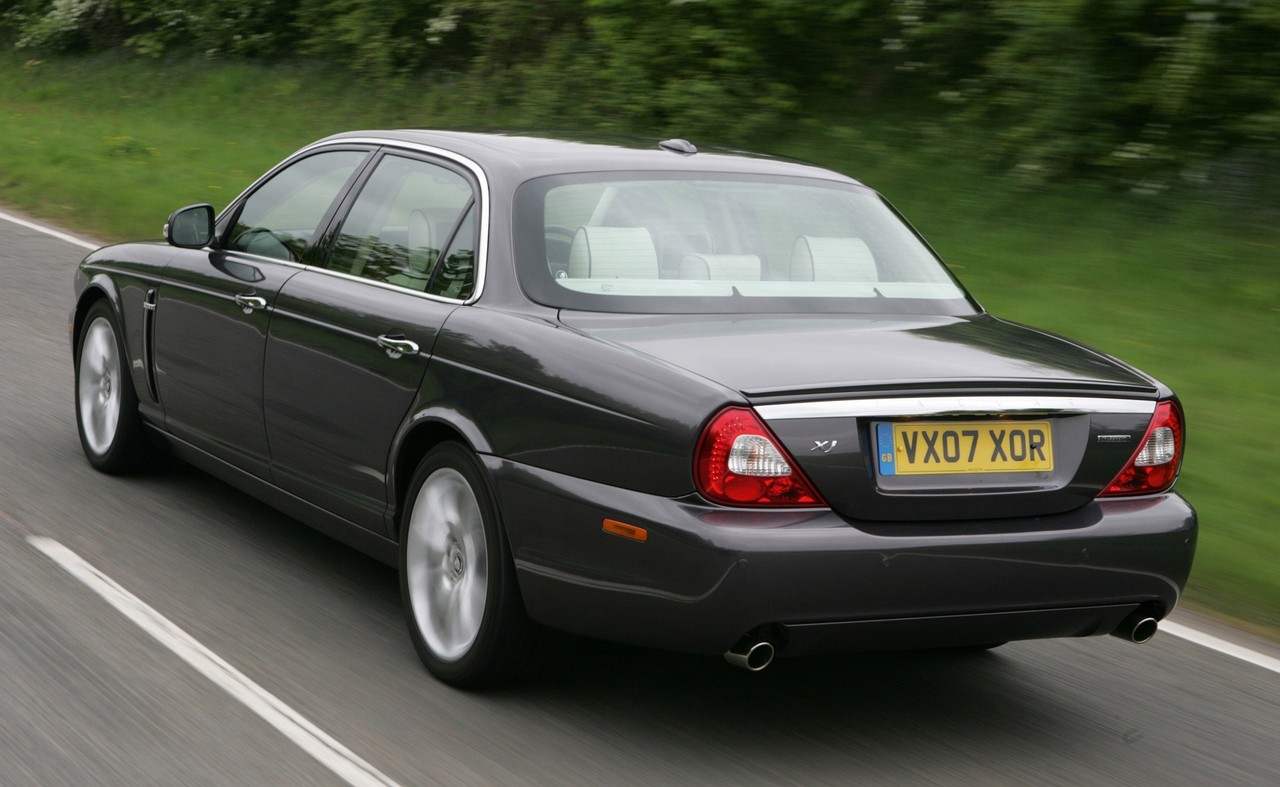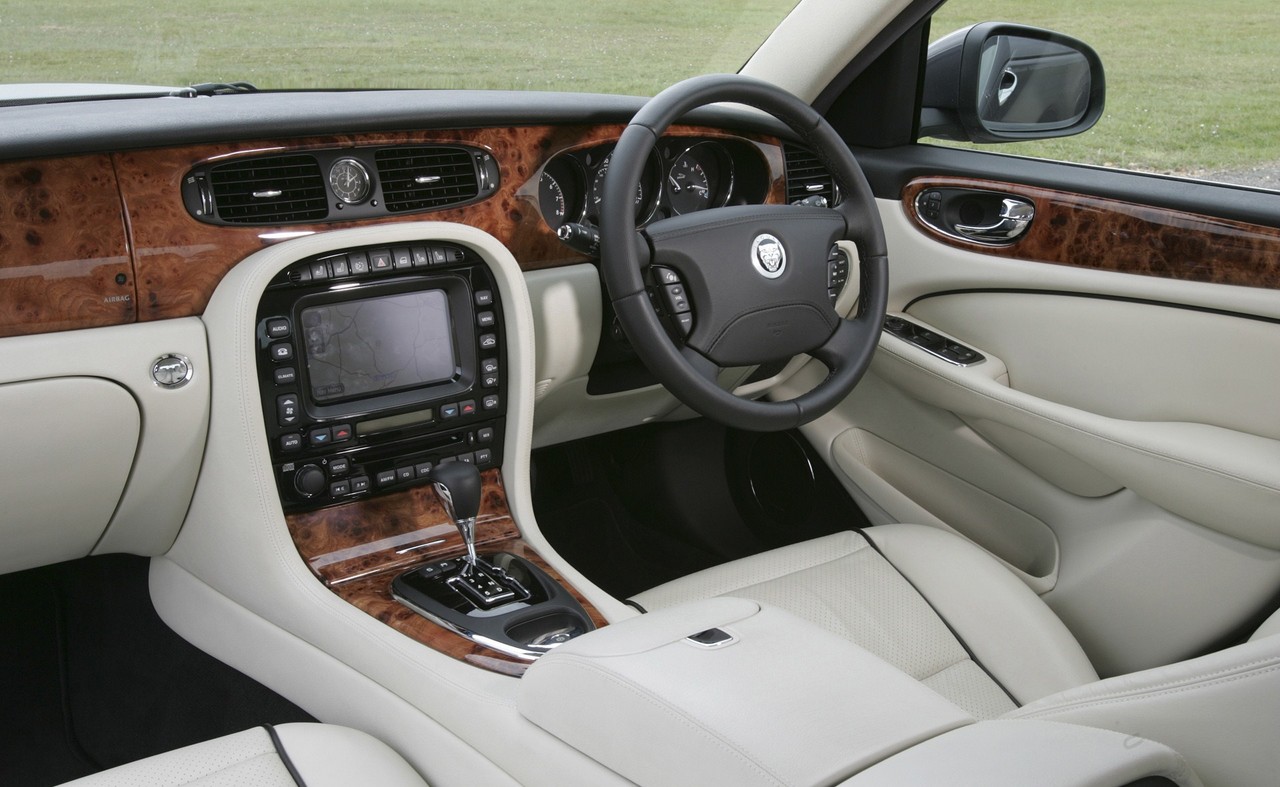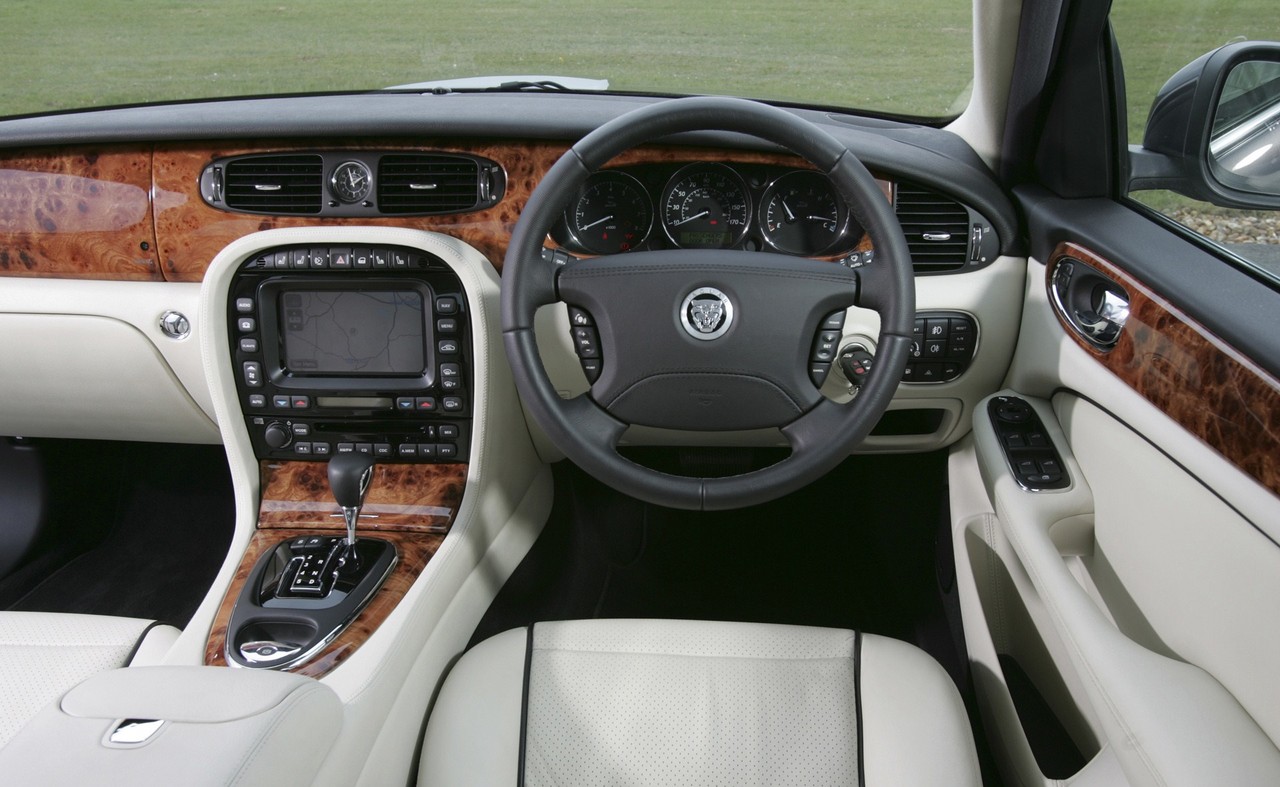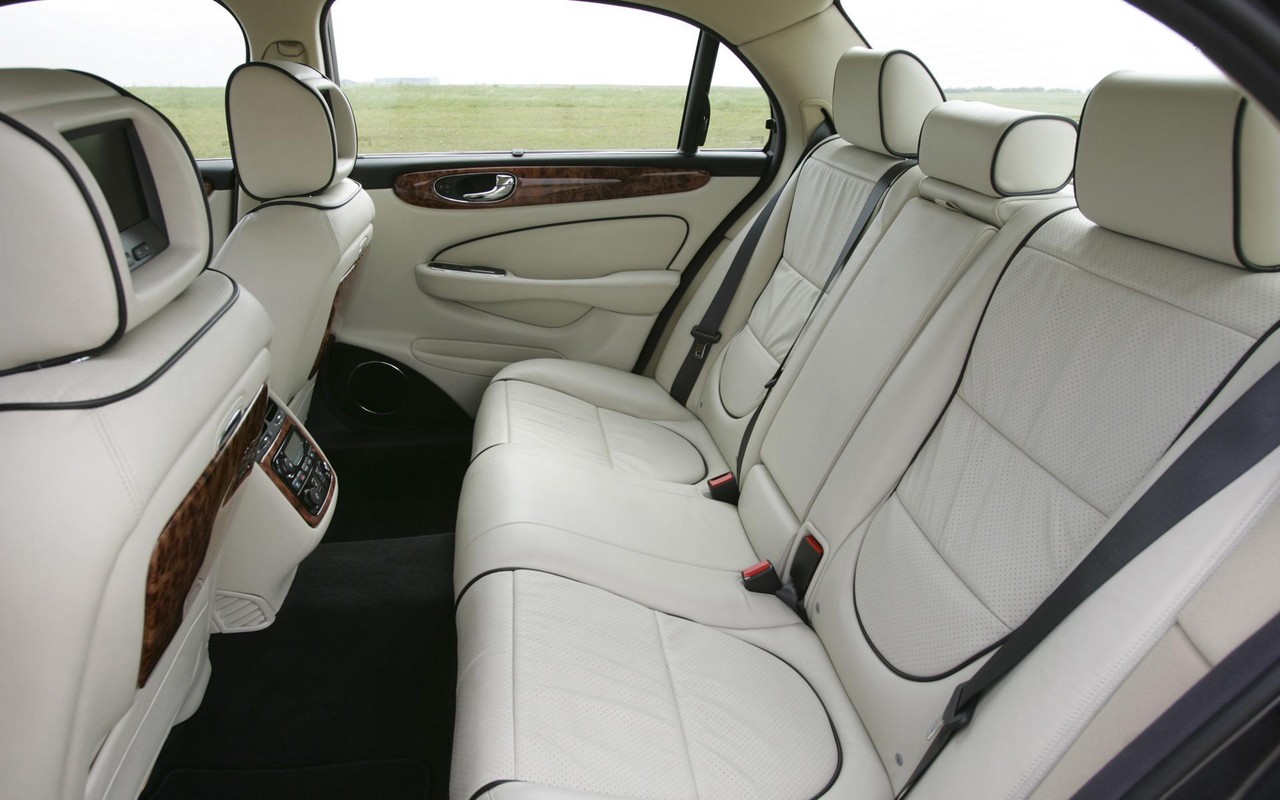
- Refined V8 engines purr
- Intuitive six-speed automatic transmission provides near seamless gearshifts
- High quality interior fit and finish
- Lightweight aluminium body contributes to agility
- Impressive ride/handling balance…
- … though ride deteriorates on lower profile tyres
- Steering lacks feel
- Radar cruise control system triggered by adjacent traffic
- For X350 XJR, 4.2-litre supercharged V8 only delivers its best at WOT. Modifications should be considered .
- Body doesn’t feel as rigid as Audi D3 A8
Review: Jaguar X350 XJ (2003-07)
Overview
Released in July 2003, the Jaguar X350 XJ range initially consisted of the XJ8, Super V8 and XJR models, with the XJ6 following in May 2004. Manufactured in Birmingham, England, the rear-wheel drive XJ range consisted of the XJ6, XJ8, Super V8 and XJR models (see table below).
Powertrains
The X350 XJ range utilised five different engines:
- the 3.0-litre AJ30 V6 engine had an aluminium block and cylinder head, fracture-split forged powder metal connecting rods, double overhead camshafts, four valves per cylinder, variable valve timing and a compression ratio of 10.5:1;
- the 2.7-litre AJD-V6 diesel engine was available from 2007 and had a compacted graphite iron (CGI) block, common-rail direct injection (peak pressure of 1650 bar), piezo injectors, twin variable geometry turbochargers with an air-to-air intercooler, double overhead camshafts, four valves per cylinder and a compression ratio of 17.3:1;
- The naturally aspirated 3.5- and 4.2-litre AJ33 V8 engines had aluminium blocks and cylinder heads, double overhead camshafts (per cylinder bank), variable valve timing, four valves per cylinder and compression ratios of 11.0:1; and,
- The supercharged AJ33S V8 engine differed in that it was fitted with an Eaton M122 roots-type supercharger and twin air-to-liquid intercoolers. Furthermore, its compression ratio was lowered to 9.0:1.
All models, however, were fitted with six-speed ZF 6HP26 automatic transmissions.
Dimensions
Compared to the Jaguar X308 XJ , the X350 XJ was 66 mm longer (at 5090 mm), 60 mm wider (1860 mm), 134 mm taller (1448 mm) and had a 164 mm longer wheelbase (3034 mm); for long wheelbase models, the wheelbase was extended by 125 mm to 3159 mm. Furthermore, the X350 XJ had a stressed aluminium monocoque with self-piercing rivets and underbody components bonded together with aerospace-grade epoxy adhesives – these changes resulted in a body that was 40 per cent lighter yet 60 per cent more torsionally rigid.
Suspension
All X350 XJ models were fitted with double wishbone front and rear suspension, electronically-controlled air suspension – including a self-levelling rear suspension function – and Jaguar’s CATS (Computer Active Technology Suspension) variable damping system as standard.
| Variant | Year | W/base | Engine | Trans. | Peak power | Peak torque | |
|---|---|---|---|---|---|---|---|
| XJ6 | 3.0 | 2004-07 | SWB | 3.0-litre petrol V6 | 6sp auto | 179 kW at 6800 rpm | 300 Nm at 4100 rpm |
| 2.7D | 2007 | SWB | 2.7-litre twin-turbo-diesel V6 | 6sp auto | 152 kW at 4000 rpm | 435 Nm at 1900 rpm | |
| XJ8 | 3.5 | 2003-06 | SWB | 3.5-litre petrol V8 | 6sp auto | 196 kW at 6250 rpm | 345 Nm at 4200 rpm |
| 4.2 | 2003-07 | SWB | 4.2-litre petrol V8 | 6sp auto | 224 kW at 6000 rpm | 420 Nm at 4100 rpm | |
| 2005-07 | LWB | ||||||
| Super V8 | 4.2S | 2003-07 | SWB | 4.2-litre supercharged petrol V8 | 6sp auto | 298 kW at 6100 rpm | 553 Nm at 3500 rpm |
| 2005-07 | LWB | ||||||
| XJR | 4.2S | 2003-07 | SWB | 4.2-litre supercharged petrol V8 | 6sp auto | 298 kW at 6100 rpm | 553 Nm at 3500 rpm |
Safety equipment
Standard safety features for the Jaguar X350 XJ included dual front airbags, front side airbags, full-length curtain airbags (i.e. for front and rear occupants), ABS, brake assist, electronic stability control, traction control and seatbelt pretensioners for front and outer rear seats.
Features
Standard features for the XJ6 and XJ8 models included 18-inch alloy wheels, a twelve speaker sound system with a six-disc CD player, dual-zone climate control air conditioning, leather upholstery, sixteen-way power adjustable front seats, a seven-inch LCD touchscreen display with satellite navigation system (DVD-based), cruise control, front fog lights, rear parking sensors, rain-sensing wipers, automatic headlights, multi-function steering wheel, remote central locking, power windows and heated mirrors, power adjustable steering column (height and reach), power adjustable pedals, power-operated blinds (rear and side rear windows), power-operated park brake, driver memory settings (seat, steering wheel position), an electrochromatic rear view mirror, a TV tuner, car phone, trip computer and an immobiliser.
The XJR was further equipped with 19-inch alloy wheels with a Brembo braking package (four-piston front and rear calipers), voice recognition, bi-xenon headlights with washers, front parking sensors, a heated front windscreen and electrochromatic power folding mirrors; the XJR long wheelbase models were further equipped with power adjustable rear seats, heated steering wheel and power sunroof. Visually, the XJR was differentiated by its mesh grille.
Compared to the long wheelbase XJR, the Super V8 was further equipped with adaptive cruise control and heated front seats.
April 2006: XJ update
In April 2006, an updated X350 XJ was released. Standard features were extended to include 19-inch alloy wheels, front parking sensors, bi-xenon headlights with washers, Bluetooth mobile phone connectivity, power folding mirrors and tyre pressure monitoring. The XJR was also fitted with a power sunroof as standard, while the Super V8 received a rear seat entertainment system with colour displays fitted in each of the front seat head rests.
The post-April 2006 XJ models were also more refined due to the introduction of an ‘acoustic’ laminated windscreen, a new secondary bulkhead system, isolated driver’s airbag and modifications to the bonnet sealing system; an uprated braking system with a bigger disc and caliper assembly was also fitted. Visually, the updated models could be identified by the absence of front and rear screen finishers and body side mouldings.
2007 XJR Portfolio
In 2007, a limited-run XJR Portfolio edition was released. Visually, the XJR Portfolio could be identified by its 20-inch five-spoke alloy wheels, aluminium side vents, bright mesh grille and chrome exhaust pipers. Inside, the XJR Portfolio was distinguished by aluminium highlights, warm charcoal leather with contrast stitching and leather framed floor mats.
Specifications
Review: Jaguar X358 XJ (2007-09)
Overview
Released in November 2007, the X358 XJ range introduced revised styling and additional features. Furthermore, the range was revised as the 3.0-litre V6 petrol engine was discontinued, while the XJ8’s 3.5-litre V8 petrol engine was slightly detuned.
Visually, the X358 XJ could be identified by its more aggressive front bumper with mesh grille and chrome detailing, front quarter panel vents, new door mirrors with integrated indicator lights, a reshaped rear bumper, rear spoiler and revised tailpipe finishers. Inside, the slimmer front seats were more supportive and provided greater rear seat leg room.
| Variant | Years | W/b | Engine | Trans. | Peak power | Peak torque | |
|---|---|---|---|---|---|---|---|
| XJ6 | 2.7D | 2007-09 | SWB | 2.7-litre twin-turbo-diesel V6 | 6sp auto | 152 kW at 4000 rpm | 435 Nm at 1900 rpm |
| XJ8 | 3.5 | 2007-09 | SWB | 3.5-litre petrol V8 | 6sp auto | 190 kW at 6250 rpm | 335 Nm at 4200 rpm |
| 4.2 | 2007-09 | SWB, LWB |
4.2-litre petrol V8 | 6sp auto | 224 kW at 6000 rpm | 420 Nm at 4100 rpm | |
| Super V8 | 4.2S | 2008 | SWB | 4.2-litre supercharged petrol V8 | 6sp auto | 298 kW at 6100 rpm | 553 Nm at 3500 rpm |
| 2007-09 | LWB | ||||||
| XJR | 4.2S | 2007-09 | SWB | 4.2-litre supercharged petrol V8 | 6sp auto | 298 kW at 6100 rpm | 553 Nm at 3500 rpm |
Features
Compared to its X350 predecessor, standard features for the X358 XJ were extended to include heated front and rear seats, a leather-wrapped steering wheel, power sunroof and motion-sensing alarm.
Related links
